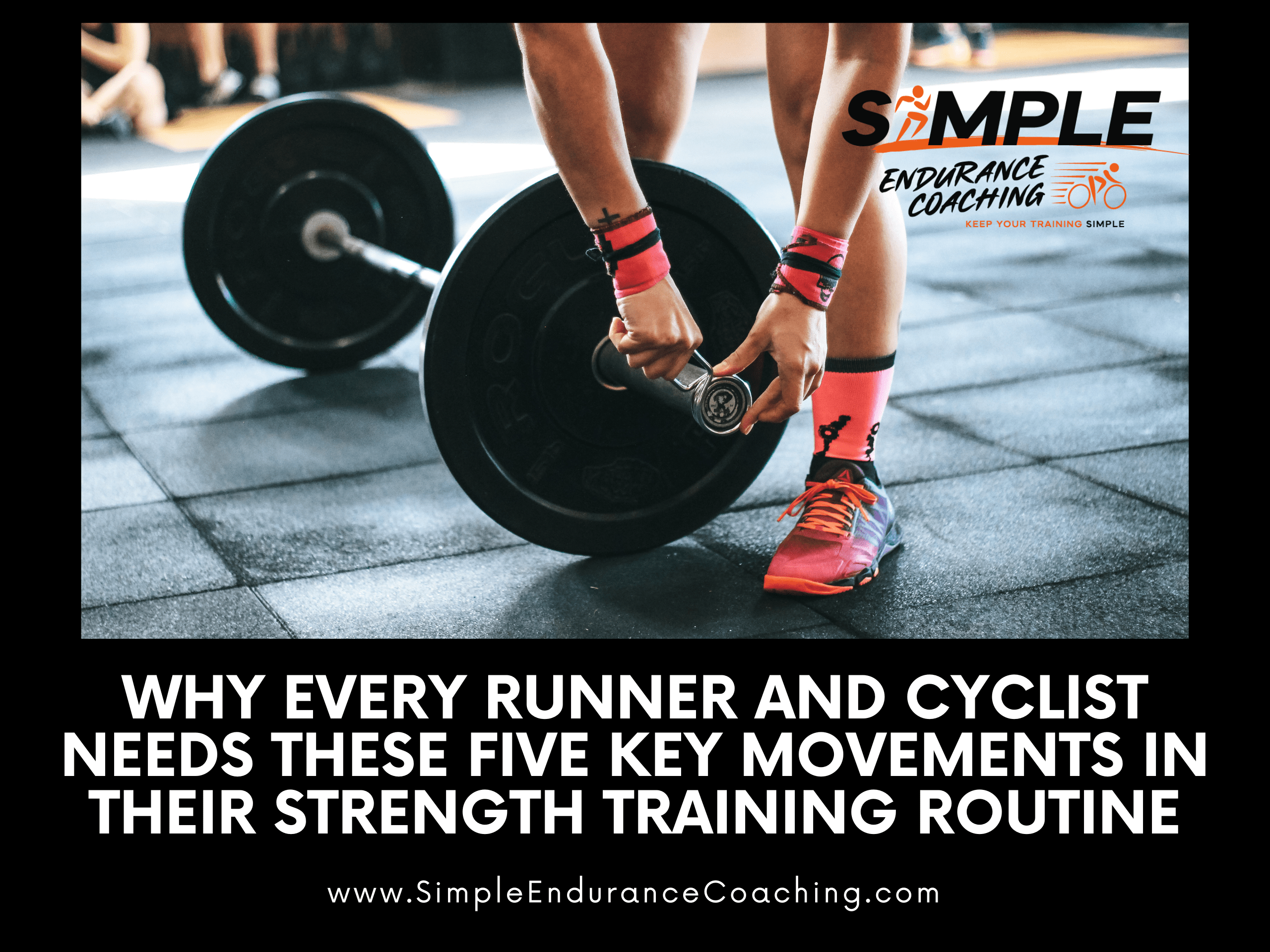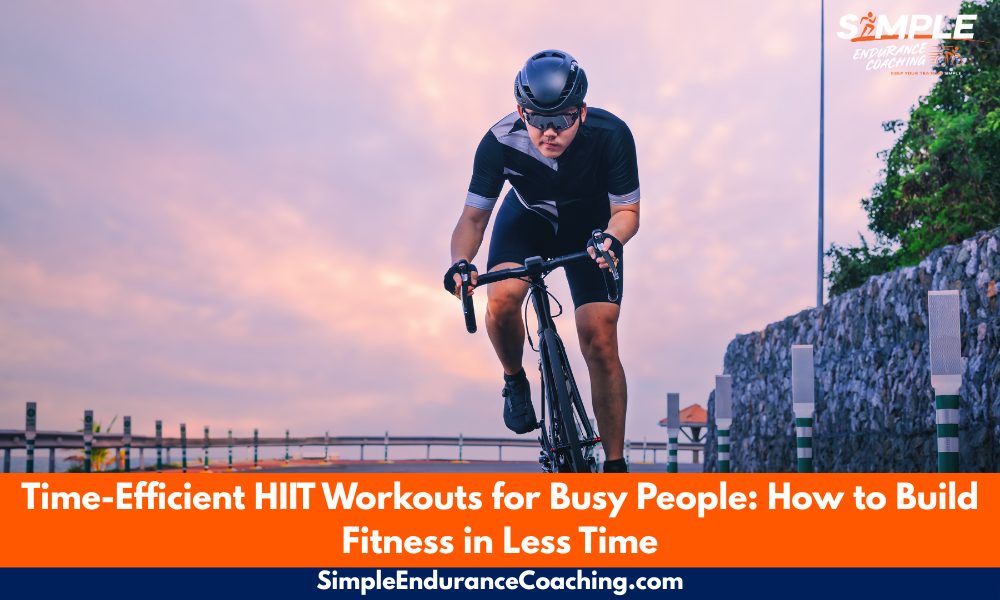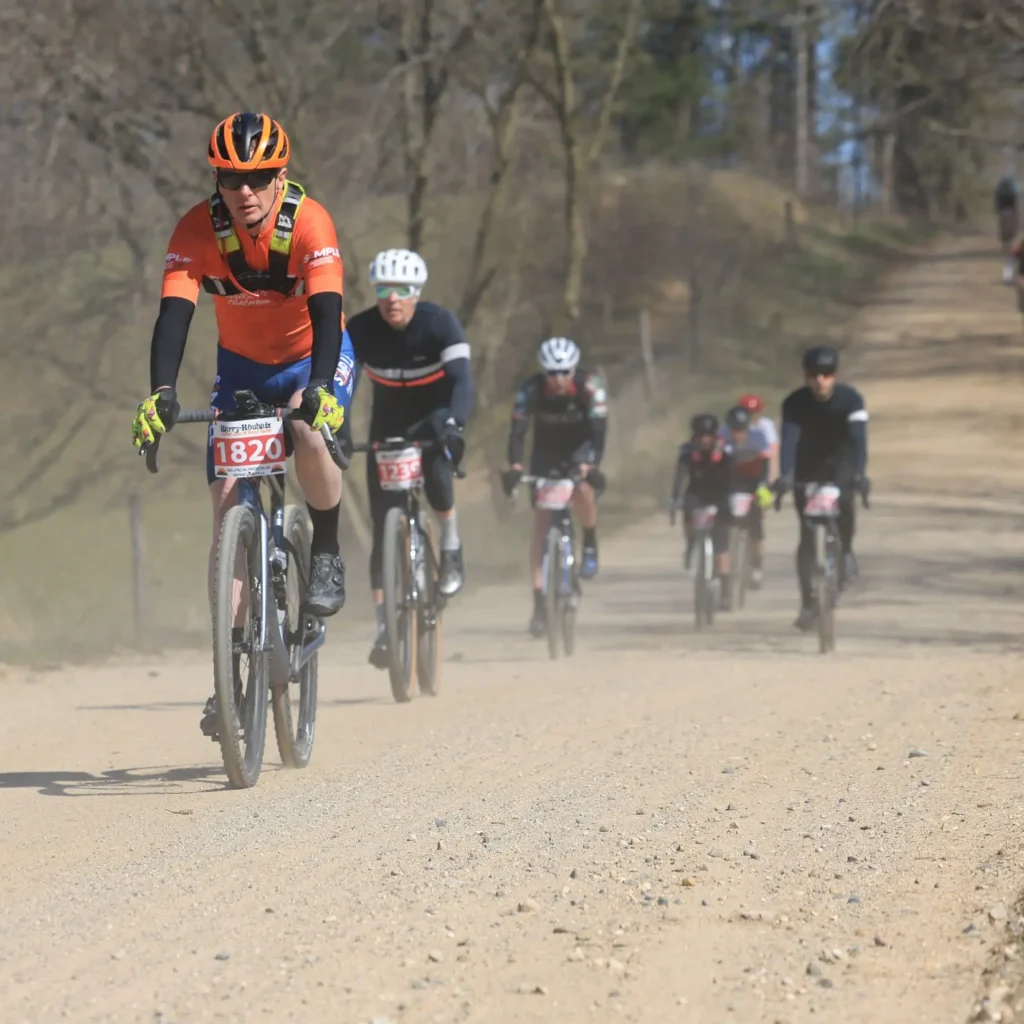Power Training for Cyclists: Incorporating Essential Five Key Movements
Cyclists and runners might want to ditch a one-dimensional approach to fitness and start incorporating pushing, pulling, hinging, squatting, and rotating movements into their routine.
These multi-joint exercises not only target neglected muscles but also improve overall strength and mobility.
These movements are essential for every endurance athlete, so we’ll provide tips on how to incorporate them into your training plan.

Runners and cyclists need general strength training
Runners and cyclists need general power training
Incorporating pushing, pulling, hinging, squatting, and rotating movements into your fitness routine can help you run faster and cycle longer.
- Pushing movements such as the overhead press and the push-up help build upper body strength.
- Pulling movements like rows and chin-ups work the back and arms.
- Hinging at the hips helps develop power in the legs, while squatting strengthens the quads, hamstrings, and glutes.
- Rotating exercises train the muscles of the core to stabilize the spine and pelvis when cycling or running.
Including strength training in your workout routine has numerous benefits for runners and cyclists.
Strength training can improve your power, speed, and endurance while reducing your risk of injuries.
It can also help you build strong bones and connective tissues and maintain a healthy weight.
Benefits of incorporating push, pull, hinge, squat, and rotate movements into power training for cyclists
Incorporating push, pull, hinge, squat, and rotate movements into your fitness routine has a multitude of benefits.
For runners and cyclists, these movements can help improve power, speed, and endurance.
They can also help improve balance and coordination.
- Pushing movements such as the overhead press or the bench press help develop explosive power in the muscles used to drive forward motion. This can be beneficial for runners who want to increase their speed or cyclists who want to be able to climb hills more efficiently.
- Pulling movements such as rows or chin-ups help build strength in the muscles used to slow down or change direction. This can be helpful for runners who need to improve their ability to control their pace or cyclists who need to be able to make quick turns.
- Hinge movements such as deadlifts or kettlebell swings target the muscles in the hips and thighs that are responsible for generating force when driving forwards or upwards. This can be beneficial for runners who want to increase their stride length or cyclists who want more power when pedaling uphill.
- Squatting movements such as bodyweight squats or weighted squats work the muscles in the lower body that are responsible for propelling you forward. This can be beneficial for runners who want to increase their speed or cyclists who want more power when pedaling.
- Rotational movements such as medicine ball throws or Russian twists help train the muscles in the trunk and shoulders that are responsible for generating rotational force.
The research behind the five key movements in your power training routine
The push, pull, hinge, squat, and rotate framework is a widely recognized and popular approach to strength training that is based on functional movement patterns.
The concept originated from the work of fitness expert and coach, Paul Chek, who identified these five fundamental movements as being essential for developing overall functional strength, mobility, and stability.
Each of these fundamental movements focuses on specific muscle groups and body mechanics and can be performed using body weight or external resistance, such as weights or resistance bands.
Numerous studies have demonstrated the effectiveness of these fundamental movements in improving strength, flexibility, and overall fitness.
For example, research has shown that compound exercises like squats can help improve lower body strength while pulling exercises like rows can improve back strength and posture.
One of the biggest pieces of research is the fact that cyclists and runners need to incorporate pushing, pulling, hinging, squatting, and rotating movements into their routines.
By doing so, they will be able to improve their overall performance and prevent injuries.
Incorporating all of these different types of movement into your fitness routine will help you become a better runner or cyclist.
Sample exercises incorporating push, pull, hinge, squat, and rotate movements
Friend, client, and runner Amanda helped me show you some basic moves with power training and how we can adapt the movements differently.
- Shoulder push exercises involve pushing a weight of some sort over your head. You can use machines at the gym, especially if you have range of motion challenges in lifting something over your head.
You can also use bands, bars, kettlebells, and dumbbells as weights. - Shoulder pull exercises involve working primarily your upper back and shoulders. There are a variety of ways of doing shoulder pulls, including deadlifts and pullups.
You can also use bands, bars, kettlebells, and dumbbells as weights. - Horizontal pull movements strengthen primarily your back, which, in turn, stabilizes your entire body when you are moving.
- Chest Press exercises are critical elements to a full-body strength routine as they build stability in your torso. You can do horizontal pushing exercises standing with a cable or a band, or lying on your back with dumbbells or a barbell.
- Hip Hinges are some of the most important exercises for endurance athletes, particularly runners and cyclists. Hip Hinge movements stress your posterior chain (back, glutes, hamstrings), which propel you forward and keep your body stabilized and strong.
Deadlifts are an example of a hip hinge, and we’re doing some more specific straight-leg hip hinges that focus more on building glute strength. - There are many effective core strengthening exercises. One of my favorites is the elbow plank rotation.
- Good Goblet Squats can offer extra kinds of stress that help endurance athletes improve their performance.
- The deadlift is one of the most effective power training exercises for endurance athletes. Done correctly, a deadlift, essentially lifting something heavy off the floor, can be full-body strength training.
The deadlift is a hip-dominant exercise that typically stresses the glutes, hamstrings, and back.
Plus you get arm and shoulder work from pulling the weight, and core stress from holding everything together- Deadlifts with a trap bar
- Deadlifts with a barbell
- Deadlifts with kettlebells or dumbbells
Less stable equals more strength in strength training routines
I will always advocate for dumbbells, kettlebells, bands, and other “unstable” loads for your exercise.
An “unstable load” is an exercise that requires stabilizer muscles to hold up the weight.
For example, if you do a one-arm dumbbell chest press, that exercise utilizes not only your chest and arm, but the whole side to keep you from rolling off the bench!
The dumbbell is unstable, and you must use more stabilizer muscles to keep the dumbbell stable.
Alternatively, if you do a machine chest press, you primarily use just your chest and arm muscles in isolation.
Those stabilizer muscles aren’t as required.
Three things cyclists and runners should know about power training for cyclists movements:
- Focus on doing two to three sets of an exercise for each of the movements.
- Using the five key movements creates a simple structure for runners and cyclists to build general strength and fitness.
- Use unstable load to build more functional movement and strength.
Want to know more about what you can achieve?
If you liked this article, please share it with others.
I support a limited number of cyclists and runners achieve their goals with more strength, endurance, and mobility.
Contact me or sign up for Virtual Coffee so we can discuss your goals, ask questions, and talk about making your endurance training more effective, fun, and Simple.
You can also opt-in to receive my weekly blog posts about what works in endurance sports.
Paul Warloski is a:
- USA Cycling Level 3 Coach
- RRCA Running Coach
- Training Peaks Level 2 Coach
- RYT-200 Yoga Instructor
- Certified Personal Trainer




